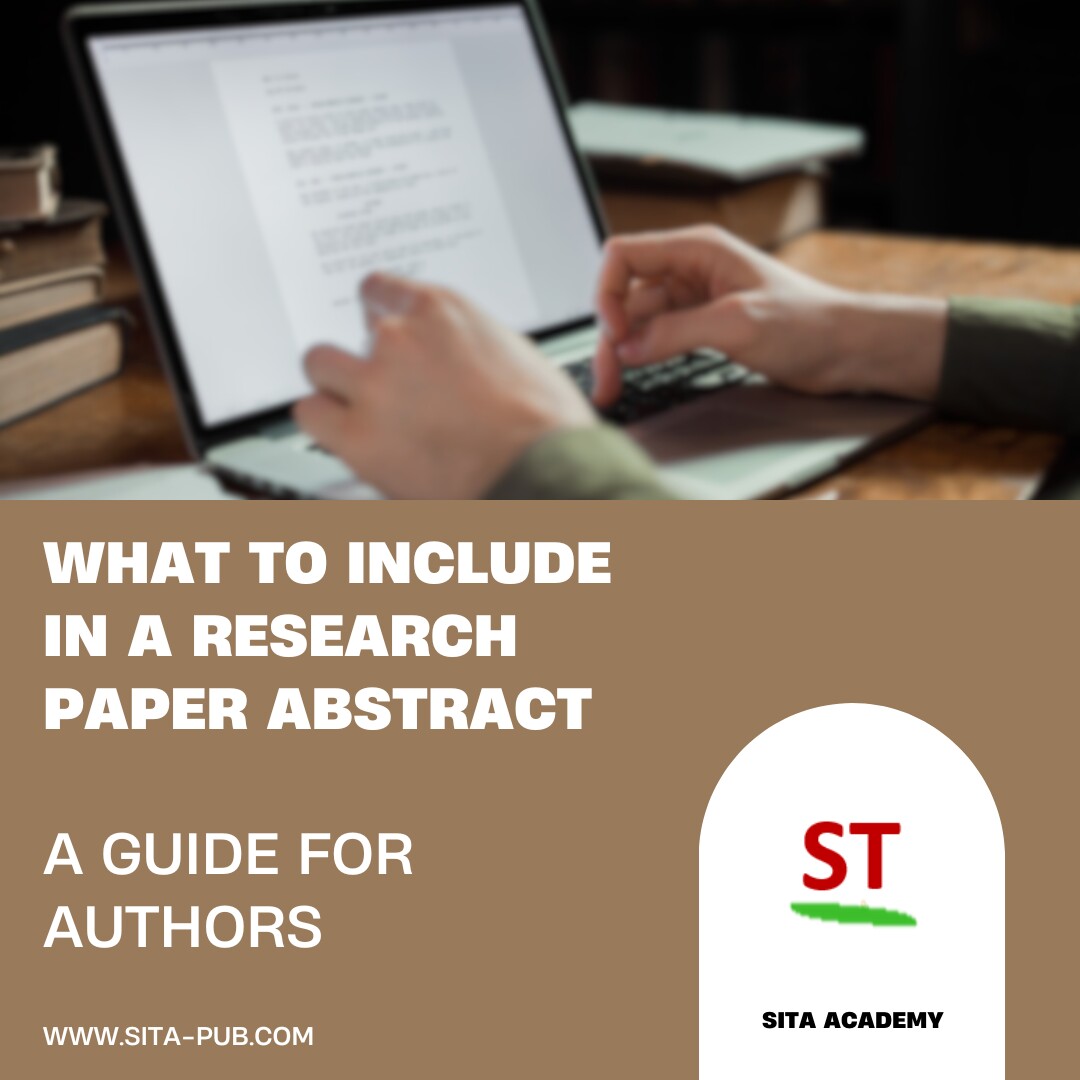What to Include in a Research Paper Abstract: A Guide for Authors


An abstract is an essential part of a research paper. It provides a concise summary of your work, helping readers quickly understand what your research is about. A well-written abstract can attract more readers and encourage them to explore your paper further. Here’s what to include in a clear and effective research paper abstract.

Start your abstract by explaining the main purpose of your research. What problem are you trying to solve? Why is this issue important? This section sets the stage for your study and helps readers see the significance of your work. For example, if your research addresses climate change, explain why understanding this topic is critical for future generations. By clearly stating the motivation behind your study, you engage the reader and provide context for your research.
Next, briefly state the specific questions or hypotheses you wanted to explore. This gives readers a clear idea of the focus of your research and what you aimed to discover. For example, you might ask, “How does urban green space affect air quality?” or “What are the effects of a new teaching method on student performance?” Clearly defined questions guide your research and help readers understand the direction of your study.
Summarize how you conducted your research. What methods did you use to collect data? Mention the design of your study, including details like sample size and data collection techniques. For instance, if you conducted surveys, explain how many participants were involved and how you selected them. Keep this section simple but clear, as it provides essential information on how you approached your research.
Highlight the main findings of your research. What did you discover through your study? Present the most important results in a straightforward way. Use clear numbers or observations when needed. For example, you could say, “The study found that urban areas with more green spaces had a 15% lower level of air pollution.” This section should focus on the key outcomes without going into excessive detail.
Conclude your abstract by discussing what your findings mean. How do they contribute to existing knowledge? What impact do they have on the field? This part connects your results to a larger context. For example, you might state, “These findings suggest that increasing green spaces in urban areas could significantly improve air quality and public health.” By highlighting the implications of your research, you show readers why your work matters.
At the end of the abstract, you can include a few relevant keywords. You need to find the right keywords for your research article .These help people find your paper more easily when searching online. Choose words that represent the main topics of your research, such as “urban green space,” “air quality,” and “public health.” Including keywords can enhance the visibility of your paper in academic databases.
Keep It Short: Most abstracts should be between 150-250 words. Aim for clarity and brevity while ensuring you cover all essential points.
Use Simple Language: Avoid complex words and jargon. Your abstract should be easy to understand for everyone, including those who may not be experts in your field.
Write in the Past Tense: Since you are summarizing completed research, use the past tense to describe what you did and found.
No Citations: Do not include references to other works in the abstract. Focus only on your own research and findings.
Revise and Edit: After writing your abstract, read it again to check for clarity and coherence. Make sure it accurately reflects the content of your paper.
A well-crafted abstract acts as a window into your research. It allows readers to quickly understand your work's purpose and importance. By including the purpose, research questions, methods, results, and conclusions, you can create a clear summary that encourages readers to learn more about your research. A strong abstract not only serves as a guide for your own paper but also enhances its reach and impact in the academic community.
Purpose and Motivation: This study investigates the impact of telemedicine on patient outcomes in rural communities during the COVID-19 pandemic. Research Questions: Specifically, we aimed to determine whether telemedicine improves access to healthcare and enhances patient satisfaction compared to traditional in-person visits. Methods: We conducted a mixed-methods study involving 300 patients who used telemedicine services and analyzed their health outcomes and satisfaction through surveys and medical records. Results: The findings indicated that 85% of patients reported improved access to care, and satisfaction rates were 30% higher in the telemedicine group compared to in-person visits. Conclusions and Implications: These results suggest that telemedicine can significantly enhance healthcare delivery in rural areas, highlighting its potential as a long-term solution for improving patient access and satisfaction. Keywords: telemedicine, patient outcomes, rural healthcare, COVID-19.
Purpose and Motivation: This research explores the effects of social media on adolescent mental health. Research Questions: We aimed to assess how different types of social media use influence levels of anxiety and depression among teenagers. Methods: Using a survey of 500 adolescents aged 13-18, we analyzed their social media habits and mental health indicators through standardized questionnaires. Results: The study found that adolescents who spent more than three hours daily on social media reported significantly higher anxiety and depression levels compared to their peers with limited use. Conclusions and Implications: These findings underscore the need for awareness regarding social media usage and its potential risks to adolescent mental health, suggesting targeted interventions may be necessary. Keywords: social media, adolescent mental health, anxiety, depression.
Why Choose SITA Academy?

Team of human professionals

Quality Assurance

Timely delivery

Satisfaction guarantee
If you have any questions, inquiries, or would like to learn more about our services, please don't hesitate to reach out to us. Our dedicated team is ready to assist you.